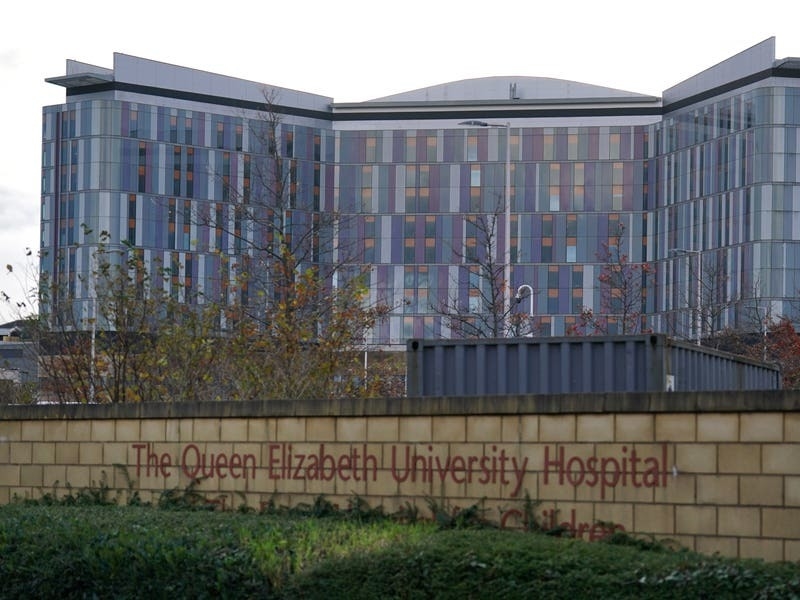There was “an overriding smell of mould” in the central plant room of a flagship hospital at the centre of infection concerns, an inquiry has heard.
The Scottish Hospitals Inquiry heard evidence on Tuesday afternoon from Tim Wafer, a water hygiene specialist who was brought into the Queen Elizabeth University Hospital in Glasgow in 2018 to advise on the use of chlorine dioxide to treat “microbiological issues” in the water system.
He told the inquiry that when he first visited the hospital he was struck by its “enormous” size, and the fact the water system depended on a central plant room.
“My initial impression was that, given the size of the facility and the spread, in other words it was large and drawn, our view was that there was a vulnerability,” he said.
He said when he visited the central plant room, “there was a concern that we picked up on about the damp, and there was an overriding smell of mould within that plant room”.
This was a problem, he explained, because mould provides “a lovely food source for micro-organisms”.
He continued: “We see this when you’ve got houses that have had flood damage, one of the things that you’ve got to address is mould, because the mould will thrive in those damp conditions, and that then leads to things like Aspergillus and so on.
“Within the hospital environment you certainly would not want that. You wouldn’t want it in any environment, quite frankly.”
Mr Wafer said he was particularly concerned by the fact the air supply into the central plant room, which was located below ground level, came from very close to “sewage treatment beds” located near the hospital.
He explained: “If you’ve got the wind in the right prevalent direction, then obviously sewage treatment beds are loaded with loads of bacteria, and that obviously can get picked up and drawn across and into the ventilation system.”
He added he was also concerned by a “persistent” water leak inside one of the plant rooms, and the fact spare plumbing components were being stored in plant rooms in open boxes, where they were exposed to dust and mould.

One issue, he said, was the presence of “dead-legs” around the hospital – pipes that had been cut and capped which held stagnant water in which micro-organisms could thrive.
He also said the way some pipe joints had been constructed “created a reservoir of stagnant water within them, so that was to do with the original installation”.
On one occasion, he added, “we did a measurement and had about 400 millilitres of water trapped within one of these joints”.
Mr Wafer said 29 chlorine dioxide systems had to be installed at various points around the hospital to treat the water system, adding: “We have never done a system that required that many.”
He said the next largest number he had seen used was “five or six”.
He said this was due to the size and complexity of the hospital’s water system, and “the fact we wanted to get the chlorine dioxide disseminated throughout the whole system”.
When asked how he would describe water quality at the hospital today, he said that based on ongoing analysis of particular organisms, “I think it would be very fair to say the current water system within QEUH is better than we see in many establishments”.
Earlier, a former director at NHS Greater Glasgow and Clyde told the inquiry that criticism of whistleblowers at the hospital was not intended to “deflect” from the patient safety issues they were raising.
When it was put to her this could have been an attempt to “deflect” attention from legitimate concerns, Dr de Caestecker replied: “It hasn’t stopped her concerns being taken seriously. It hasn’t stopped a lot of activity and actions to try and resolve them.”
She was also asked about a finding in a 2015 investigation that some infection control doctors did not appreciate the need to “risk-assess decisions from an organisational/political perspective”.
Asked whether the “political” referred to the need to protect the hospital’s reputation, Dr de Caestecker replied: “Yes, I think reputational damage in this circumstance is important because your hospitals have to be safe, patients have to be safe.
“But also people who are having to go into hospital need to feel they’re going into a safe environment where they’ll be well cared for.
“By saying one needs to think about reputation of a hospital and of people that work in it, I was not meaning therefore you don’t tell the truth, or you say something is safe when it’s not.
“Of course, that would be entirely wrong to do to that.”
The inquiry is currently investigating the construction of the QEUH campus, which includes the Royal Hospital for Children.
It was launched in the wake of deaths linked to infections, including that of 10-year-old Milly Main.
The inquiry continues.





